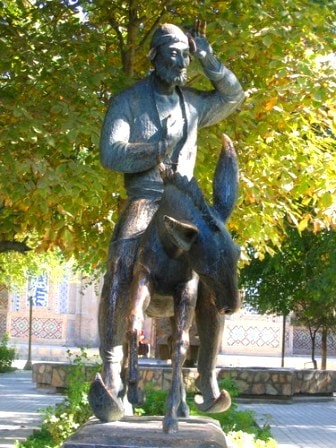Вы здесь
Bukhara the magnificent.
Tourist services in Bukhara.
The fabled oasis city of Bukhara in Uzbekistan, jam-packed with hundreds of historical monuments and buildings, is a living open-air museum. Strata of the city’s long history unfold before your very eyes.
Its well-preserved centre is home to mosques, I mausoleums and madrassah as well as an imposing fortress and domed trading halls. Surprises await the visitor around every corner as strata of the city's long history unfold before your very eyes.
To walk through the streets of Bukhara's old town is to take a walk down the ages. The city's story began around 2,500 years ago and today it houses an amazing collection of mediaeval buildings in their original urban setting.
As befits Central Asia's holiest city, it's richly endowed with mosques, mausoleums and medressas, but it also has an impressive selection of secular architecture. In the middle of the 19th century Bukhara had over 200 mosques, and students flocked to its 100 medressas to learn about Islamic theology.
It was also home to many caravanserais where merchants would rest after their arduous journeys across the deserts of Central Asia before trading their wares in the city's covered bazaars.
The Heart of Bukhara.
Many of the religious buildings are still standing today and the most impressive is the soaring Kalon minaret, which stands on a square in the heart of the old town. The 47-metre tall minaret is flanked by the huge Friday mosque on one side and the Mir-i-Arab medressa, complete with two turquoise domes, on the other.
Legend has it that the Kalon minaret was erected in the XIIth century after Arslan Khan, the city's ruler, was visited in a dream by an imam he'd killed in an argument. The imam demanded the Khan bury his head in a place where no one could step on it and so the minaret was built over the unfortunate imam's final resting place.
Over the centuries it has withstood earthquakes and the attentions of Genghis Khan, who was so impressed with the tower that he spared it the destruction that was meted out to the buildings around it.
You can climb up the minaret's 105 steps for some great views over the old town and the immense mosque, which can hold up to 10,000 worshippers, at the side of the tower. The mosque was built in the XVIth century on the ruins of an earlier place of worship that was swept away after Genghis Khan's destructive visit.
Opposite the mosque is the Mir-i-Arab medressa, which is still in use as a working Islamic school with around 250 students studying the Koran, Arabic and Islamic law. Its facade is adorned with intricate tile work in shades of blue and green. Inside the complex are the tombs of its founders topped with stunning turquoise domes.
An Impregnable Fortress in Bukhara.
The Ark is thought to be the oldest building in Bukhara and was home to the city's rulers for centuries, right up until 1920 when the artillery of the Red Army pummelled the fortress into submission.
Its imposing walls have been restored to give an impression of how impregnable the fortress must have been in its heyday. The Ark formed a royal city within the city, with palaces, a throne hall, a mosque, the emir's harem, barracks, stables and workshops contained within its walls. It was the fortified stronghold from where the city was ruled.
Nowadays it houses a museum covering the history, architecture and nature of Bukhara.
Shopping on the Silk Road in Bukhara.
As the site of an important oasis, Bukhara was a major stopping-off point on the Silk Road. Merchants came from far and wide to trade in its covered arcades and bazaars, bringing silks and spices from the east and exchanging them for precious metals and carpets.
The city's entrepreneurial past remains alive today, with many of the medressas and trading arcades that are dotted around the old town now acting as shopping centres. Silks and puppets are on sale alongside ceramics and miniature paintings.
Metalworkers still toil away in the old town's narrow streets producing knives and finely engraved metal plates. Carpets are another item associated with Bukhara, with the city's name given to the carpets that were on sale in its markets, although more often than not these carpets were made by nomadic Turkmen tribes from the desert areas rather than in the city itself.
In recent years attempts have been made to revive carpet making in the old town, with some former medressas turned into workshops where you can watch the nimble-fingered weavers create their masterpieces.
Time for Tea in Bukhara.
Bukhara's not just about sightseeing and shopping. For relaxation join the locals for a pot of green tea under the shade of the mulberry trees which surround the city's original water source, a pool known as Labi Hauz.
If you're hungry, try a meat-filled samsa fresh from the tandoor oven. By night the air is filled with the aroma of skewers of meat sizzling over a bed of coals. Try a few skewers with Uzbekistan's favourite salad, achik chuchuk, made from tomatoes, cucumbers and onions.
As you recline on a topchan, a raised, covered seating area with floor cushions, sipping green tea, it's not hard to imagine yourself transported back in time to the era of 1001 nights, with the domes and minarets of the old town lit up around you and the exotic scents filling the air.
Authorship:
Paul Bartlett. Magazine " Tengri ". 1, 2012
Photos
Alexander Petrov.







